courting the muse

Shown here is Lydia Delectorskaya hired originally to look after Henri Matisse’s wife, Amélie, the Russian-born Delectorskaya was eventually asked to pose for portraits, becoming one of the artist’s most frequent subjects and his most trusted assistant.
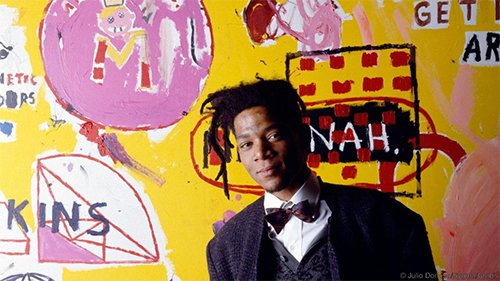
Basquiat and his grafitti inspired art
Courting the Muse
When an artist faces a startling white canvas in the beginning of the creative process, there is a moment of hesitation, sometimes fear or anxiety about desecrating that perfect whiteness in a gamble to create a work of art. This is risky business and requires some mental and emotional strength. No one wants to fail and waste all those precious and expensive art materials. Creative people of all sorts have come to rely on the muse developing a relationship with another person or substance that is complex and intuitive. It can also be a destructive relationship that erodes an artist's quality of life in the pursuit of transcending the ordinary and producing the utterly divine. The pressure to succeed can be daunting. It is not surprising artists sometimes look to an external source to smooth over the ragged edges and this can be deadly and dangerous. Jean-Michel Basquiat was one such artist who died at age 27 from a heroin overdose after achieving radical success when his graffiti epigrams attracted the attention of the galleries in the lower East Side of Manhattan. Not confined to the visual arts, some musical and screen talents who suffered fatally are many and among them Marilyn Monroe, Michael Jackson, Judy Garland, Jim Morrison, Jimi Hendrix, Janice Joplin, Whitney Houston, Philiip Seymour Hoffman...to name just a few. Talent that was so tragically extinguished.
In the visual arts, the painter, Pablo Picasso obsessively relied on a somewhat less hazardous muse making a series of women his illusionary goddesses of inspiration and achieving lasting greatness through devotion to and depiction of each of his current muses at the time. He is quoted as saying, "There are only two kinds of women, goddesses and doormats". Picasso had at least six muses whom he fell in love with (a passionate man), women who were his wives or mistresses who inspired him to create his highly individualized portraits, one of whom was the French photographer, painter, and poet, Dora Maar.
On 26 April 1937, the city of Guernica in northern Spain was bombed by the German Luftwaffe. So many of the pictures Picasso painted that year are of people in terrible anguish. In Weeping Woman, Dora’s face is like cracked glass. The bright colours, thick black lines and contorted face are Picasso’s way of expressing overwhelming feelings of terror and sadness. The painting ultimately attained political significance as did the mural-sized painting, Guernica, shown below and considered to be the most moving and powerful anti-war painting in history.

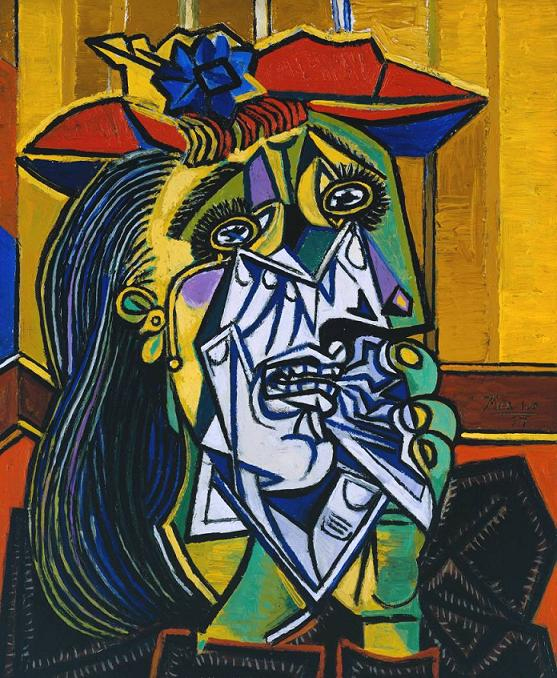
Picasso's Weeping Woman has the graphic impact of great and agonizing sorrow captured through the lens of the muse.
But in counterpoint some of the most beautiful art in the world was created through the inspiring aura and physicality of the living muse. Consider the portrait of Emilie Louise Flöge by the Austrian symbolist painter Gustav Klimt. Flöge was an Austrian fashion designer and her designs or exquisite patterns are depicted in magnificent detail in Klimt's portrait of her. Flöge was also thought to be the model in the painting, The Kiss, widely considered a masterpiece of the early modern period. Love, intimacy, and sexuality are common themes found in Gustav Klimt's works although he was 45 and still living with his mother when he painted The Kiss. But do not be deceived, he also fathered at least three illegitimate children.
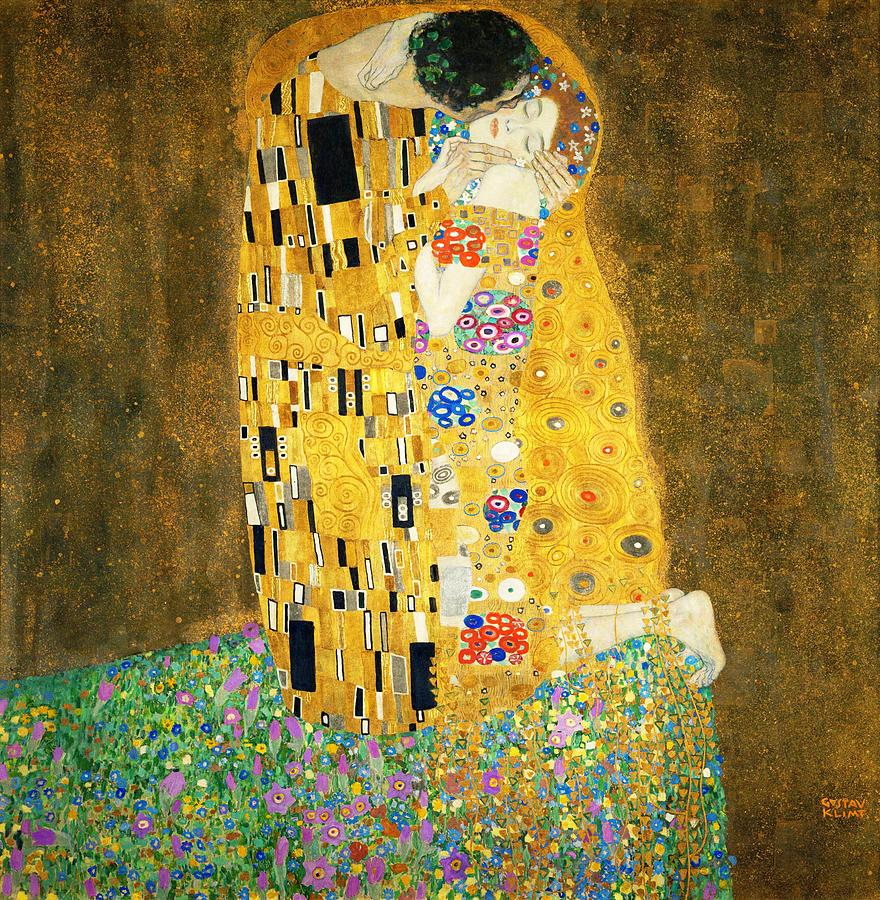

Portrait of Emilie Louise Flöge (1902)
Klimt had an obsession with cats and used cat urine as a fixative for some of his artworks which were thus eventually destroyed but would have otherwise been worth millions today.
Salvador Dali was inspired by Gala Diakonova whom he painted in a very classical style, a figure amidst his mystical iconic symbols. Gala was ten years older that Dali and married to the poet, Paul Eluard, when they met but were eventually married for 53 years. Gala had a profound influence on Dali's painting and it is thought he would never have become the widely famous artist he was without her modelling frequently for his work. Although their relationship was far from conventional with his alleged impotence and her promiscuity he continued to be enraptured, painting her as a beautiful goddess as she aged well into maturity. 'I would polish Gala to make her shine, make her the happiest possible, caring for her more than myself, because without her, it would all end.' wrote Dalí (so he bought her a castle). As they say behind every great man there is a great woman.
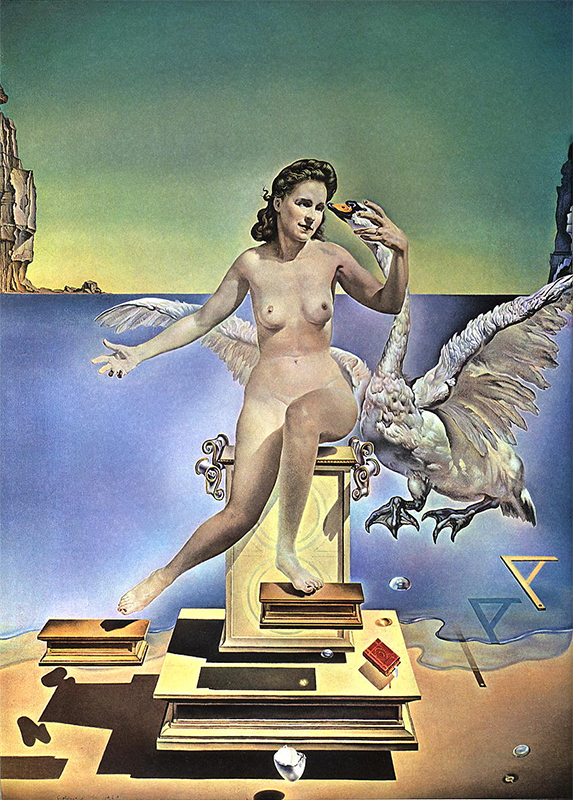
Leda Atomica, 1949
But what about the abstract painters? Probably there is some conjecture out there that abstract artists are somehow out of their minds? Do they need to go completely off the rails like the bug exterminator and writer William Lee in the 1991 film Naked Lunch who succumbed to 'bug powder' and whose Clark Nova typewriter had become a talking insectoid?
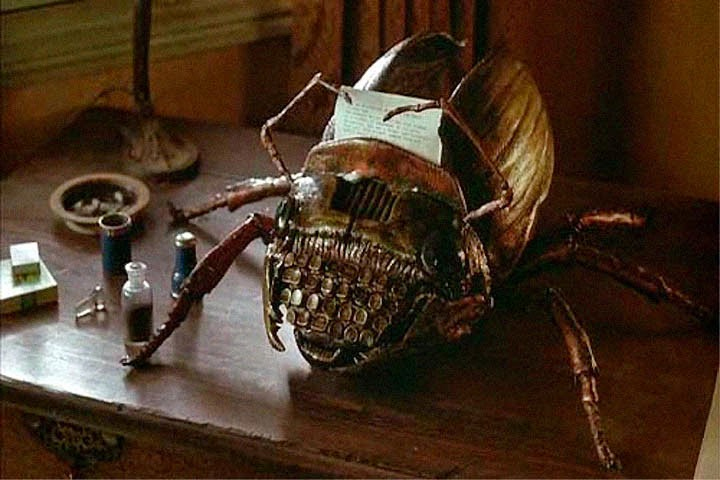
The abstract painter Jackson Pollock was a gentle soul for the most part except when having an attack of rage and rarely even spoke much socially. He was also under psychoanalysis and therapy for alcohol abuse. He was decapitated in a massive crash with a tree in 1956 in his Olds convertible at age 44 while under the influence of alcohol, excessive bravado, and anger. While married at the time to painter Lee Krasner, Pollock's lover, Ruth Kligman, a source of his inspiration, was the only survivor. It is rumored that Pollock “Jack the Dripper” sometimes traced the outline of his female lovers in dripped paint to begin his excessively dense abstract paintings. In the late 1940's Pollock achieved one of the most disruptive artistic innovations the 20th Century had ever seen.
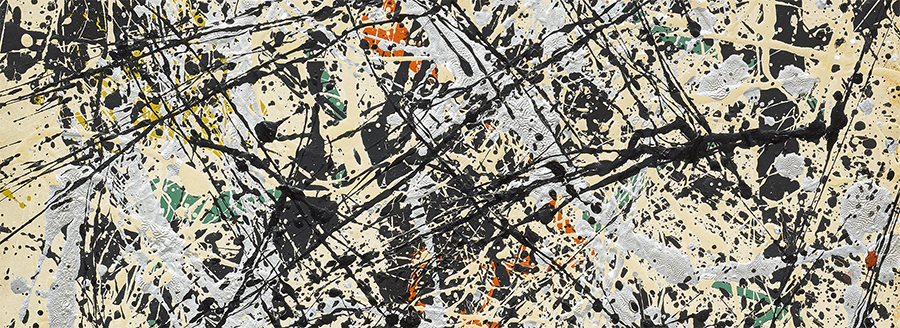
During the 1940's amd 1950's a generational shift occurred on the canvas when artists turned away from depicting the real or their stylized impressions of the real. What caused this shift? Was the world changing in such a way during WWll and the Cold War that artists turned to a parallel expression in their work that reflected the emotional tones of the times or were perhaps a denial of the horrors of reality. Were their paintings influenced by the current politics and thus expressions of freedom? Were they seeking a haven for beauty and humanism through immersion in pure color and a kind of primitive return to a more direct kind of kinesthetic language? Was the subject of their work their personal inner worlds?
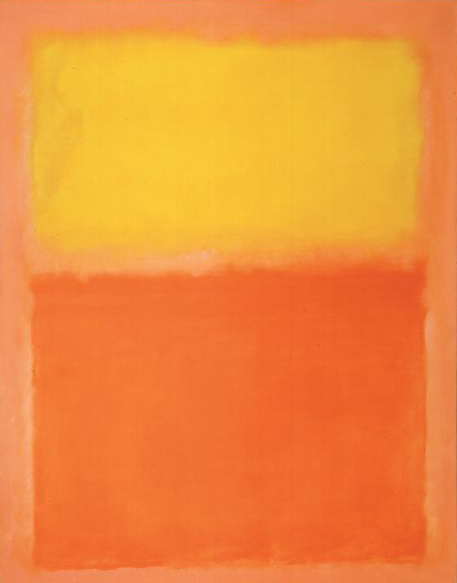
Rothko's Orange and Yellow 1956
There is very little said about the abstract artist's muse. Certainly many like Pollock had turned to drugs and alcohol, substances that were used to help unlock the unconscious mind and source of creativity. The abstract painter, Mark Rothko, used subdued emotionally charged geometric patterns offset by softened, organic edges, highlighting the layers of human consciousness and the space inside the mind. “I’m interested only in expressing basic human emotions—tragedy, ecstasy, doom, and so on,” he declared. “And the fact that a lot of people break down and cry when confronted with my pictures shows that I can communicate those basic human emotions….If you…are moved only by their color relationships, then you miss the point.” On February 25, 1970, the 66-year-old artist was found dead, having succumbed to depression by overdosing and cutting his wrist. Or was it death by other hands? His demise had the elements of a murder mystery.
If you've read this far you might still be curious about how I activate the muse to help the process of painting. My secret? My main muse is nature. I like to study natural compositions created by a mysterious design, and the exquisite colors found in nature are in themselves inspirational. Sometimes I chant in Sanskrit by using cryptic syllables that appeal to the universe for knowledge and creativity. Some would call this a form of channeling and in the sense that I try to stay out of my own way this might be true. My objective is not to obsessively impose my own visions on what is happening on the canvas while at the same time making continuous decisions about what to include. I believe that there has to be some evidence of intelligence in abstract art and care must be taken to avoid complete and meaningless randomness. Intent is important in order to make the language of abstraction both communicable and meaningful.
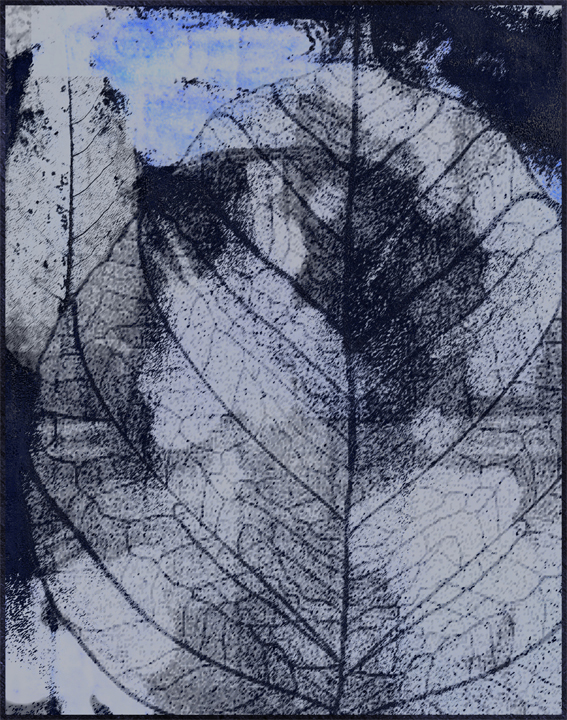
The Bodhi Leaf
monoprint 16 x 20 in.
© W.Skog
See more blog posts by Canadian artist Wendy Skog.
wendy skog abstract art studio copyright 2022 all rights reserved